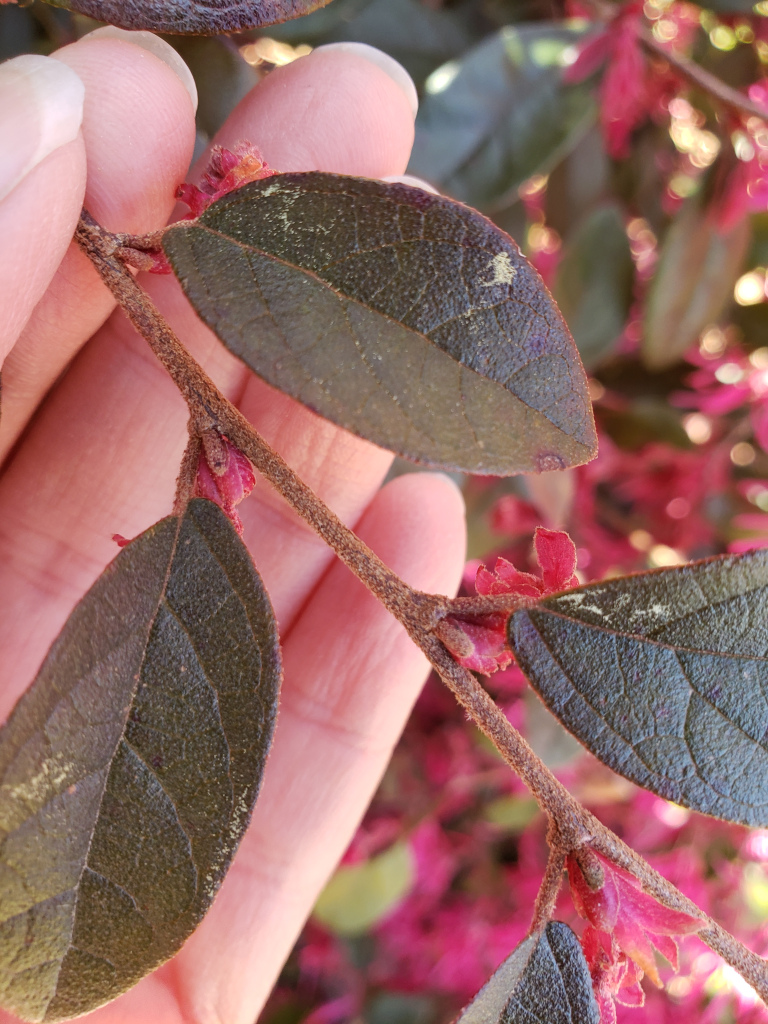Spring is really here! We are seeing so many beautiful flowering plants in the landscape this week. To finish out March, we will be covering the loropetalum shrub, or Chinese fringe flower (Loropetalum chinense). This plant has been in the United States for almost 150 years, but recently many new colors of foliage and flowers have been released, which has made it more popular. They typically bloom the most from mid-March through mid-April, but amazingly, loropetalum can bloom sporadically throughout the entire year!
Loropetalum is an evergreen shrub with small leaves that may be anywhere from a medium green to burgundy to almost black in color. The flowers range from white to many shades of hot pink and fuchsia, to bright red. Loropetalum may be grown as a hedge, a small to large shrub, or even a small ornamental tree, depending on the cultivar and how it is pruned. While it will tolerate heavy pruning, it will be a healthier and more attractive plant if maintained in a somewhat natural form. Any pruning should be completed in the spring after flowering in order to promote the best blooms for the following year. Pests and diseases are rarely an issue, but if planted in wet, boggy soils, loropetalum shrubs will likely develop root rot.
ID Tips
-
Loropetalum flowers look like small little tassels of fringe, with lots of long, thin, straplike petals. They look similar to the flowers of witch hazel, but witch hazels are deciduous, and bloom before the leaves bud out, while loropetalums are evergreen.
-
Loropetalum leaves are small and roundish to ovate (egg-shaped), arranged in an alternating pattern along the stems. The leaf surface is rough, and may feel a bit like sandpaper. The leaf margins (edges) may be very finely toothed, or smooth.
-
The stems are densely "pubescent," or covered with tiny hairs.
 Note the alternate pattern and the tiny hairs covering the stem and leaves.
Note the alternate pattern and the tiny hairs covering the stem and leaves.